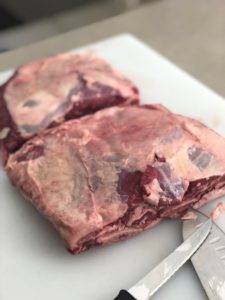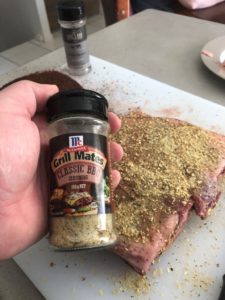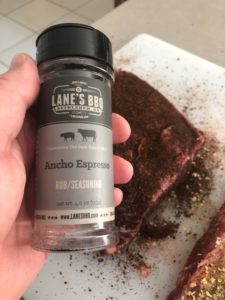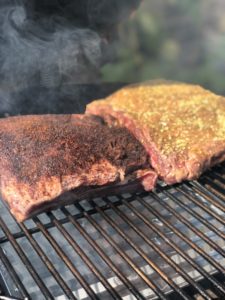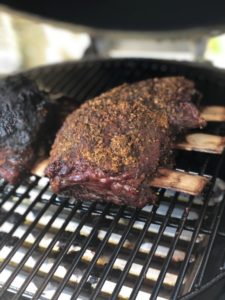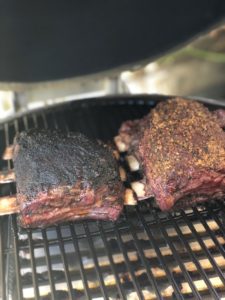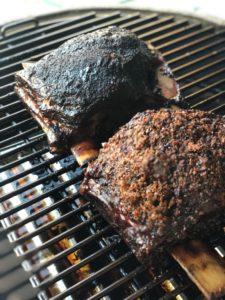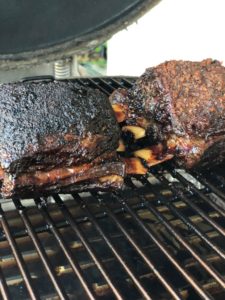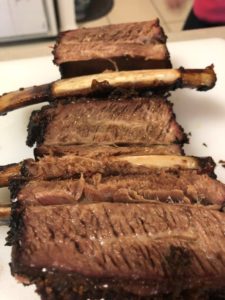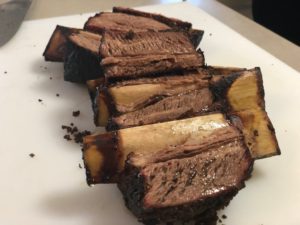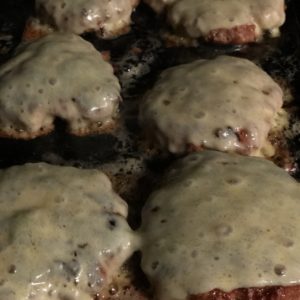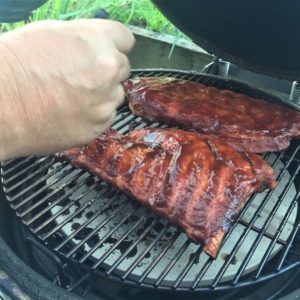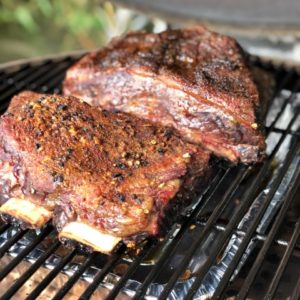My all time favourite cut of beef (well today anyway)
Now I have done beef ribs a number of times as they are an absolute favourite. I have definitely found my groove in how to nail these on the kamado and typically run the same setup and temps every time. For this cook, the intention was no different. I used the last of my favourite beef rub – Lanes Ancho Espresso on one rack and tried out a McCormick BBQ rub
.
My method is pretty simple, no spritzing, no boating, no wrapping. Just plain old-fashioned low and slow and let the kamado do its thing. Now I also need to point out that I am not aiming for the crustiest bark nor do I really care for the elusive smoke ring.
To me what matters is the final product. Taste and texture will win hands down every day. I am of the opinion that if you have the time, use it. If you are low enough ~108C [225F] then you will end up with a product that does not dry out and will be packed with flavour. I feel this is because the rendering of the internal fat happens once the internal temp of the meat reaches over 60C [140F] and can take many hours to complete as the temperature slowly increases to what we are aiming for ~ 95C [203F]. It is in these last hours that the breakdown of the fats and collagens keeps the meat moist and packs in so much flavour.
Let “time” happen
If time is not on your side, then I suggest the alternate methods – increase temp, wrap or even boating can help when the time is not on your side.
Like most things in life, there is always more than one way to skin a cat and it takes some experimenting to find your own method that produces time after time. This is especially true for us as home BBQ enthusiasts, I am sure there are different rules for the competition teams. Hats off to the comp teams as the time pressures and flavour profiles that are expected really takes some mastery.
What is your go-to method?
Let me know what your go-to method is in the comments. Would love to hear how you cook ribs and what works on your pit.
Here are some photos of this latest cook.
The setup and methods I used are similar to my last cook of beef shorties.
Some things that were different, I had some major temperature fluctuations. The kamado doesn’t normally fluctuate too much so I am a little puzzled why I saw the temperatures move from the desired 108C [225F] all the way up to 160C [320F] and towards the end it was as if the fire extinguished, luckily I was able to get the heat back by opening top and bottom wide open to get the airflow back.
Temperature fluctuations
My initial thoughts are that the wood chunks ( Hickory and Lychee) where the reasons for the increase, perhaps as they ignited the temperature spiked. The second theory I have is that the charcoal I am using was partly new (out of an unsealed bag) and partly some unburnt charcoal that was in the kamado since the last cook, only 1 day ago. Perhaps the charcoal from the bag was “wet” and therefore not as stable?
I don’t think I will ever know exactly but it is interesting how each cook can be different.
On the plus side, there were NO detrimental effects to the ribs due to the temperature variations. When I started this journey I was always anxious about temperature control, nowadays I am way more relaxed as most of the time it really doesn’t matter that much. If you cook to temperature and feel rather than time, you will be very satisfied with the food you produce.
Till next time Joe On!

